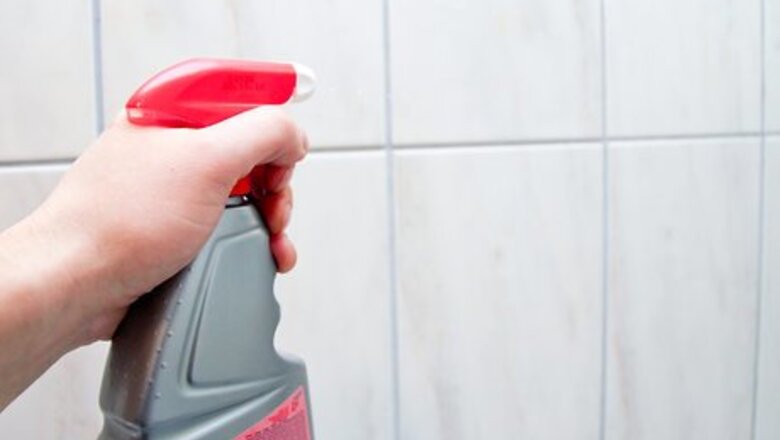
views
Cleaning Soap Scum with a Commercial Cleanser
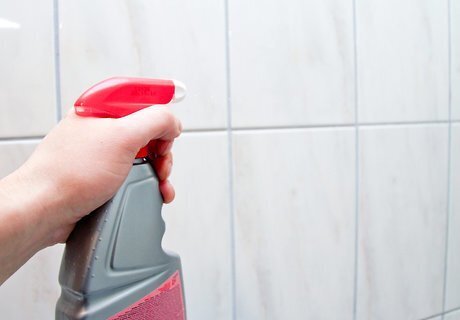
Spray the tile with a targeted tile cleaner. A commercial bathroom or tile cleaner is often the easiest way to get rid of soap scum because it is formulated specifically to get rid of the stubborn residue. Apply a generous coat of the cleaner to the dirty tile according to the bottle’s instructions. Tile or bathroom cleanser typically comes in two formulas: a liquid or foam spray. A liquid spray is effective on horizontal tile surfaces where you don’t have to worry about it dripping.The foam is often easier to use on tile walls because it stays in place without dripping off. Always read the instructions on a commercial tile or bathroom cleaner before using it on any tile. Before applying the cleaner all over the tile, test it in a small, inconspicuous area to ensure that it won’t damage the tile.
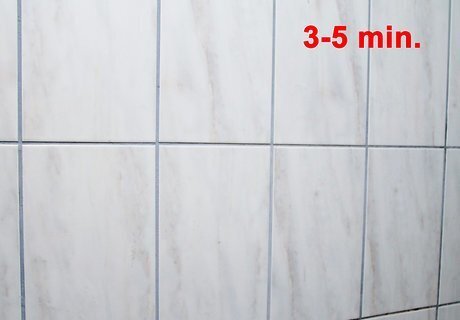
Allow the cleaner to sit on the tile for several minutes. Once you apply the tile cleaner to your tiled surfaces, you must allow it to sit for approximately 3 to 5 minutes. That gives the cleaner time to cut through the soap scum and residue so you can easily remove it. Some cleaners may need to be left on longer than 5 minutes. Consult the bottle’s instructions to determine the proper amount of time.
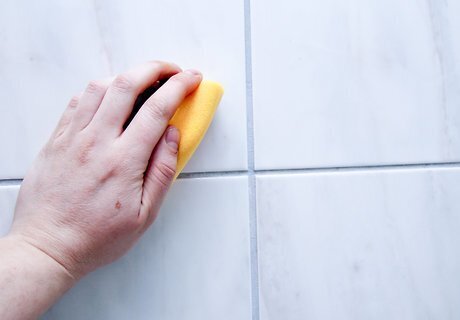
Wet a sponge and wipe down the tile. After the cleaner has sat on the tile for several minutes, run a sponge under warm water. Use it to carefully wipe down the tile and remove the soap scum and cleaner residue. Make sure to use a non-abrasive sponge or you may scratch the tile. You can substitute a damp cloth for the sponge if you prefer. If there are areas of the tile where the soap scum is particularly stubborn, you may need to use a soft scrub brush to remove the residue. Be careful not to scrub too hard, though, or you may scratch the tile.
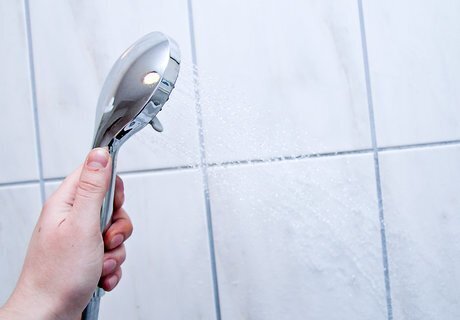
Rinse the tile with warm water. When you’ve wiped away all of the soap scum and cleanser residue with the sponge, fill a spray bottle with warm water. Spray the tile with the water to rinse the surface until it’s clean. If you don’t have a spray bottle, you can wet a cloth with warm water and use it to rinse the tile.

Dry the tile. To keep the tile from developing more soap scum or mildew, it’s important to dry it completely. Use a squeegee or towel to thoroughly dry the entire surface.
Using a Vinegar and Detergent Mixture
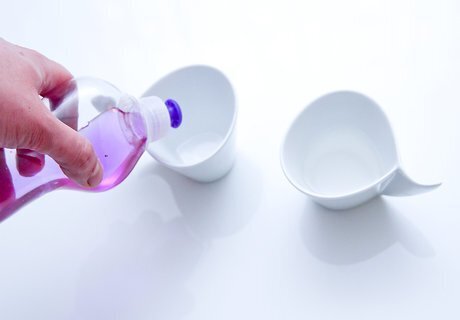
Measure equal parts of vinegar and dish soap. To make homemade soap scum cleaner, you’ll need equal parts of white vinegar and dish soap. You can make as little or as much of the cleaner as you’d like, so adjust the amounts accordingly to have 1 part of each. If you want to make enough of the cleaner to use repeatedly, it’s best to measure between 1 and 2 cups (237 to 473 ml) of both the vinegar and dish detergent.
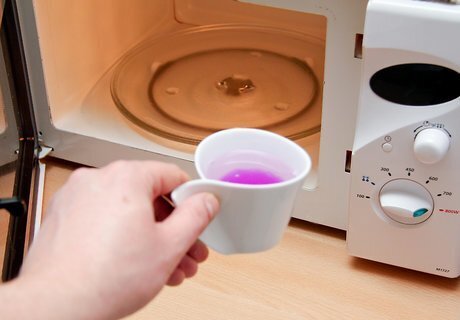
Warm the vinegar in the microwave. Once you’ve measured out the vinegar and dish soap, transfer the vinegar to a microwave-safe bowl. Heat it in the microwave for 30 seconds to 1 minute or until it is hot but not boiling. Heating the vinegar makes it easier to blend it with the thick dish soap.
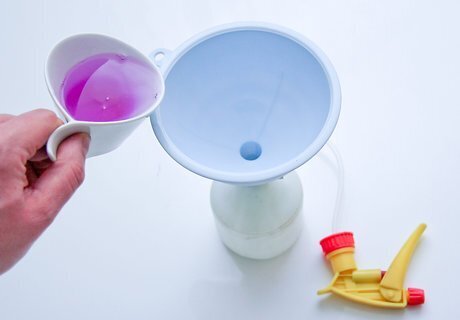
Combine the vinegar and soap in a spray bottle and shake it to mix. After you’ve heated the vinegar, pour it into a spray bottle. Add an equal amount of the dish soap, and secure the lid on the bottle. Shake it well to mix the two. Test the spray after you’ve mixed it. If it’s too thick to spray, you can mix in a little bit of warm, distilled water to thin it out.
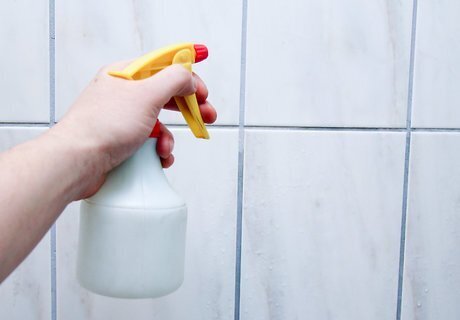
Spray the mixture over the tile and let it sit. When you’re ready to use the cleaner, spray a generous amount over the affected tile. Allow the spray to sit on the tile for at least 30 minutes so it has time to cut through the soap scum. If the tile has a particularly thick layer of soap scum, you may want to leave the spray on the surface for an hour or longer.
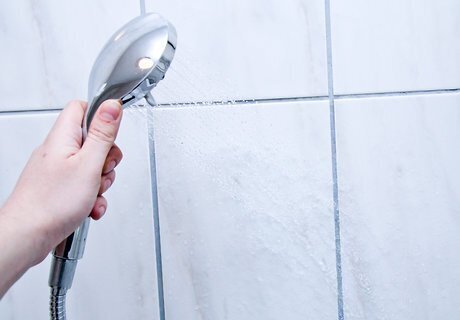
Wipe the tile down with a damp sponge and rinse it clean. After you’ve let the cleaner sit on the tile for a half hour or longer, use a damp sponge to wipe the soap scum and residue away. Next, spray the area with warm water to rinse it completely clean. If the soap scum isn’t wiping away on the sponge, you can use a soft scrub brush to work on the stubborn areas. Scrub lightly, though, to avoid scratching the tile. If you don’t have a spray bottle to rinse the tile, wet a clean cloth or rag with warm water to rinse it.
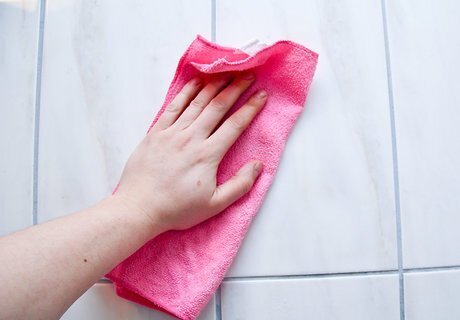
Dry the tile. Once the tile is rinsed clean, use a clean towel or rag to wipe down the surface so it is completely dry. Keep the bottle of cleanser with the rest of your cleaning supplies, and use anytime that you notice soap scum buildup. The homemade soap scum cleaner should stay effective for 6 months to 1 year.
Using a Baking Soda and Vinegar Mixture
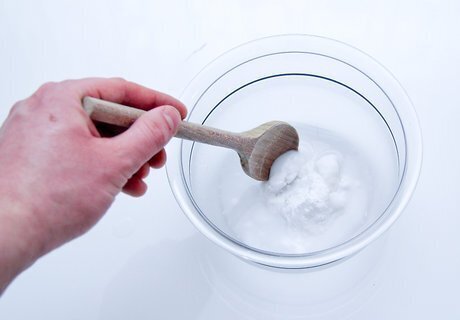
Mix the baking soda and vinegar. If you prefer an all-natural tile cleaner, add 1 cup of baking soda (180 g) to a bowl. Drizzle in just enough white vinegar to create a thick paste. It’s normal for the mixture to fizz when you combine the ingredients.
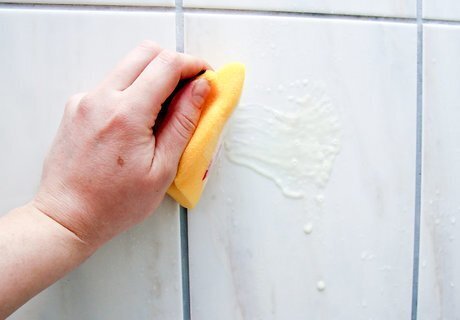
Apply the mixture to the tile and let it sit. Once the baking soda and vinegar mixture stops fizzing, apply it the dirty tile with a damp sponge. Allow the mixture to sit on the surface for at least 15 minutes so it has time to break down the soap scum. You may want to leave the baking soda paste on the tile for up to a half hour if the soap scum is particularly thick.
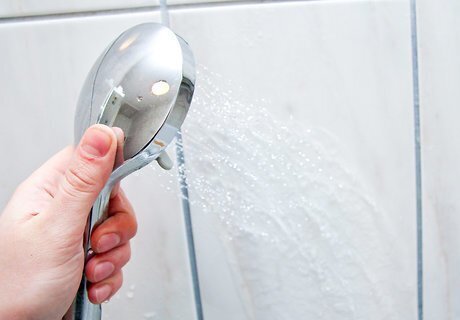
Wipe the mixture off with a sponge and rinse the tile off. After you’ve allowed the baking soda paste to sit on the tile for at least 15 minutes, wet a clean, non-abrasive sponge and wipe it away. Next, use a spray bottle filled with warm water to thoroughly rinse the tile so it’s completely clean. If there are some areas where the soap scum hasn’t come off, you can scrub them with a soft-bristled brush.
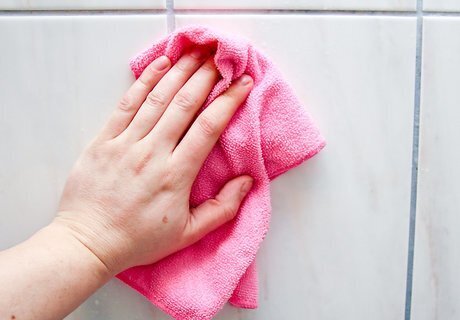
Dry the tile. When the tile is completely clean, use a clean towel or cloth to wipe down the surface. It’s important to dry the tile completely if you want to keep the surface free of soap scum and mildew. You can even use a magic eraser to get rid of soap scum. It is better to use soaps that are in plastic bottles instead of bars of soap. The products in bottles are more soluble and drain a little quicker than bar soap.


















Comments
0 comment